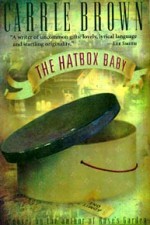
The 1933 World’s Fair in Chicago is a showcase for wonders and marvels from all parts of the earth: a circus existing side-by-side with the halls of science. In some cases, the line between the two is clearly drawn, but then there are the babies, and they are a whole other story.
They lie in near perfect silence within the Infantorium, next door to a woman who dances in the nude. For 25 cents visitors can troop past the rows of gleaming equipment and complacent wet-nurses in rocking chairs to get a look at the tiny forms, some of which could fit inside a shoe, curled up in the rarified air of their incubators. For some, the quiet is unnerving and the tiny babies grotesque, but for most the atmosphere provides a welcome respite before they return to the glare and noise of the fair. For Dr. Leo Hoffman, the Infantorium represents his life’s work, and these tiny specimens of humanity are the premature babies to whom he has devoted himself for almost two decades.
His dual role as showman and doctor does not come naturally to him. At a time when neonatal research is practically unheard of, he cannot afford to be choosy about the source of his funding, and the proceeds from his Infantorium allow him to offer free medical services to these preemies, giving them a chance at life that they might never have had. And so the Infantorium stays year-round at Coney Island, tours the continent, and gets a space at the Chicago World’s Fair; with the possible exception of Caro Day, the fan dancer, it is the most controversial exhibit there.
The Hatbox Baby, by Carrie Brown, draws the reader gently but irresistibly into this world of triumph and defeat, hope and despair. Step by step, Brown unveils the personalities behind the fair personas and takes us inside them revealing their secret desires and dreams. With style and sensitivity, she makes us care about the fate of these tiny newborns and of the people who take care of them. Slowly but surely we become players in the drama ourselves, choosing a side and cheering for it.
There are those who malign Hoffman, there are those who respect him, and there are those who bring him their babies, not from hope of the children’s survival, but from a compulsive need to do something. He is accustomed to dealing with these parents, who gaze at him with their haunted eyes, terrified by the unfamiliarity of the baby’s appearance and behavior, and he knows all too well that, many times, the person who brings in the infant never returns to claim it. This is why, when the nurse hands him a baby who arrived in a hatbox, his first instinct is to ask about the young man who delivered it.
The hatbox baby, as they call the unnamed preemie, will change things, not only for weary, discouraged, dedicated Dr. Hoffman, but for everyone around him as well.
The baby doctor is used to the pompous rants that have trailed him through Europe, claims that the babies are mistreated, and that the idea of displaying them is immoral, made by matrons who have never set foot inside the building. Until now, those problems have stayed in Europe; America has always welcomed him, albeit not in the way he would like. Against his will, he has been lumped in with the dwarves and bearded ladies, another addition to the boardwalk attractions. He has fought this stereotype, protesting that his babies are not freaks and should not be treated as such, but it has never worked, and so, this summer, he and his tiny charges are living beside the notorious fan dancer.
Gradually, and against his better judgment, the doctor gets to know Caro and her cousin, St. Louis Percy (named for the city, not the saint, as he tells people), and events begin to fall into place around him. These people, whom he has resented for demeaning his own work, prove his staunchest allies in the battle against the overbearing, self-righteous, influential women who seek to remove his “disgraceful” presence from their city. Naturally, none of these ladies have any interest in actually visiting the Infantorium or inspecting the facilities; they prefer to write scathing letters to the newspapers and picket the building, armed with home-made signs and indignation.
The Hatbox Baby captures the essence of Chicago in the summer of 1933—the sights, smells, sounds, and emotions of a place wherein hundreds of thousands of people have gathered to celebrate a century of progress. Brown’s writing is lyrical and descriptive, and the characters, through whom she tells her story, are unfailingly human, never stereotyped or predictable. Part of this vivacity may come from the fact that while the characters, as they are portrayed here, are fictitious, The Hatbox Baby is based on fact. There was a European baby doctor who toured the world’s fairs to spread awareness about premature birth, and he did operate a permanent facility, known as an Infantorium, on Coney Island. In the same vein, there was a story of a baby delivered in a hatbox, and the doctor’s exhibit at the Chicago Fair was located near a famous fan dancer, but details have been changed and histories freely invented so that The Hatbox Baby continues to stand on its own as a work of fiction.
While it sounds cliché to call this a book about the power of love, The Hatbox Baby is, in a sense, just that. However, it is also a trip back in history to a time when, while the world looked eagerly into a future filled with light and progress, a doctor must charge admission to save his patients’ lives.






